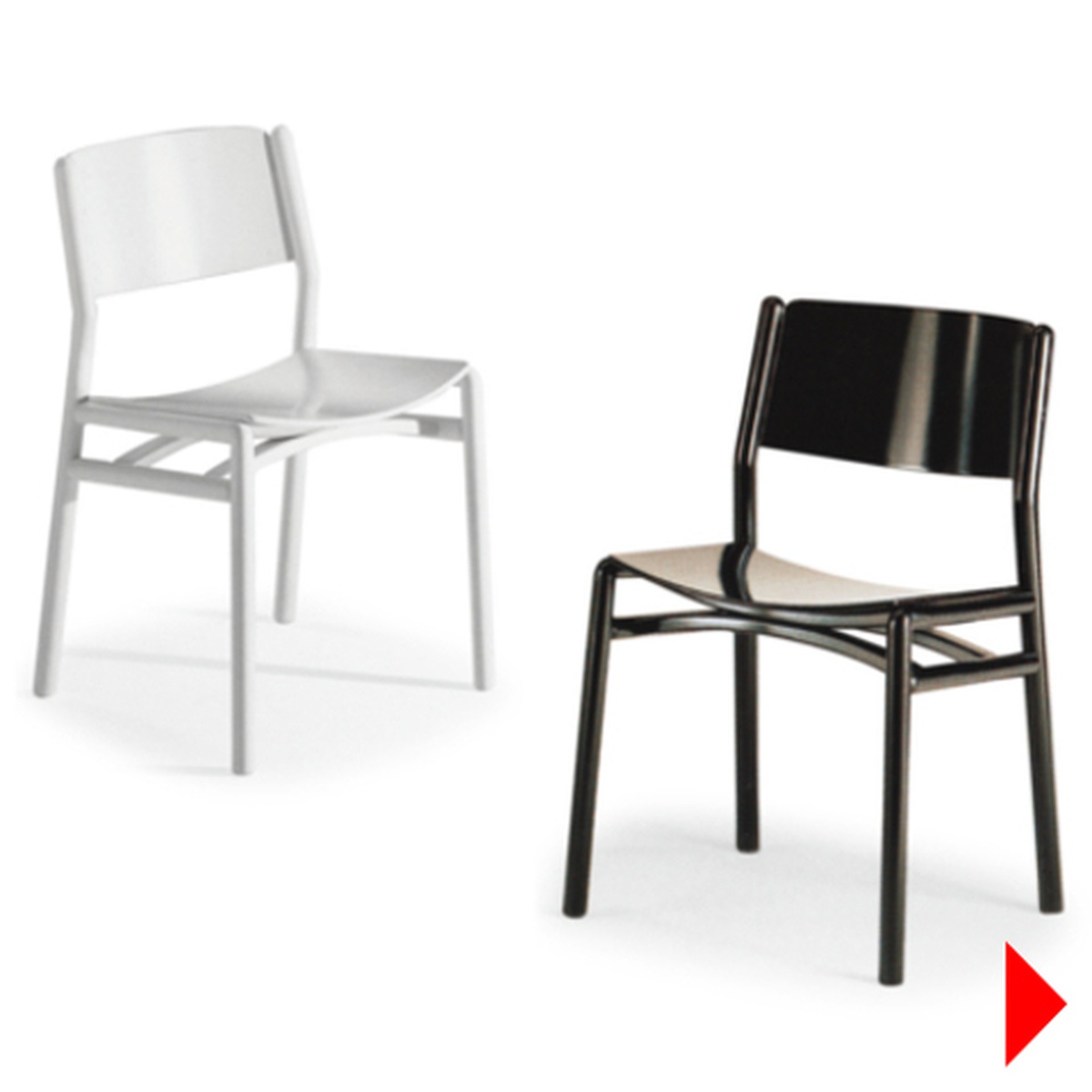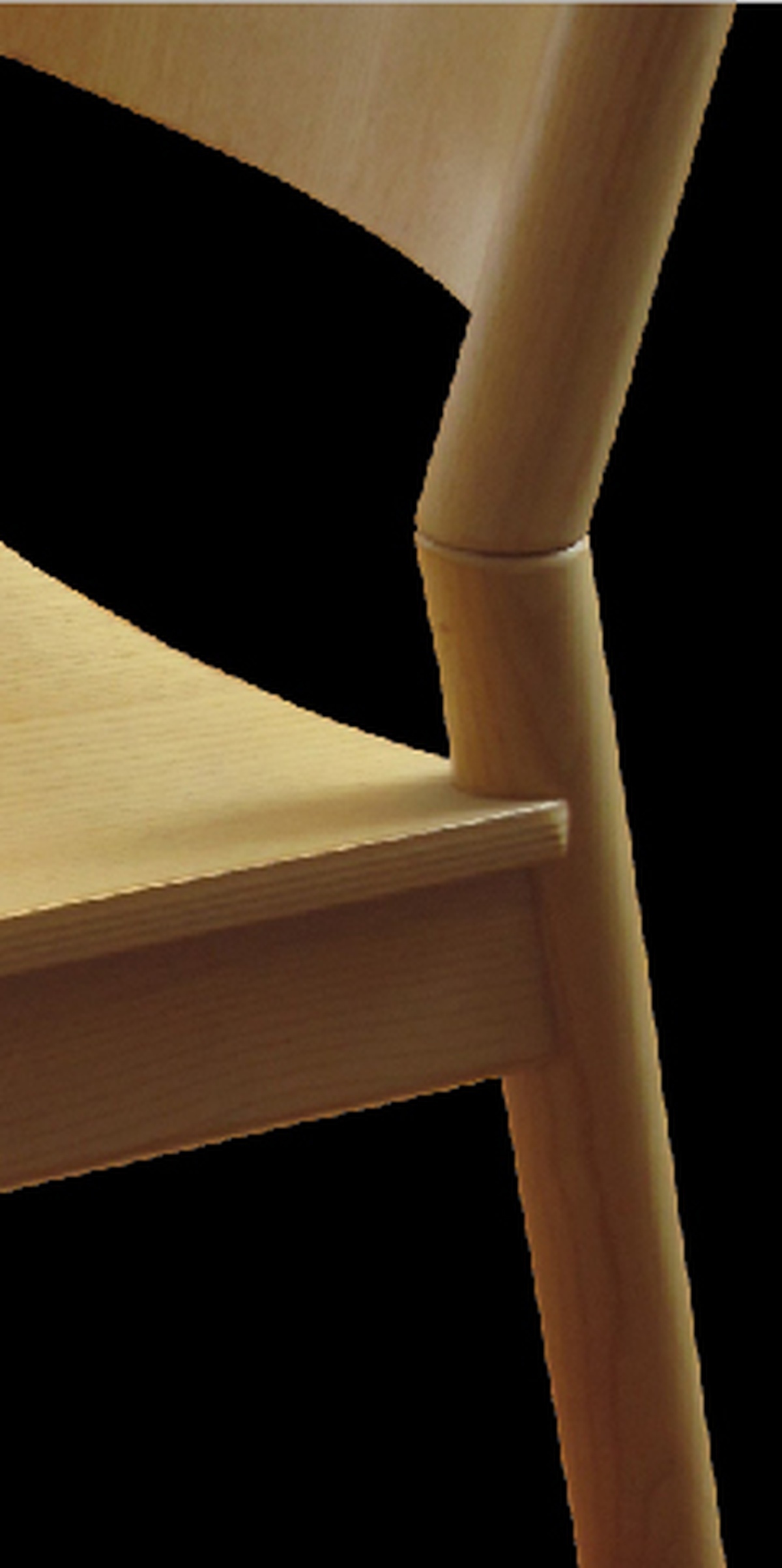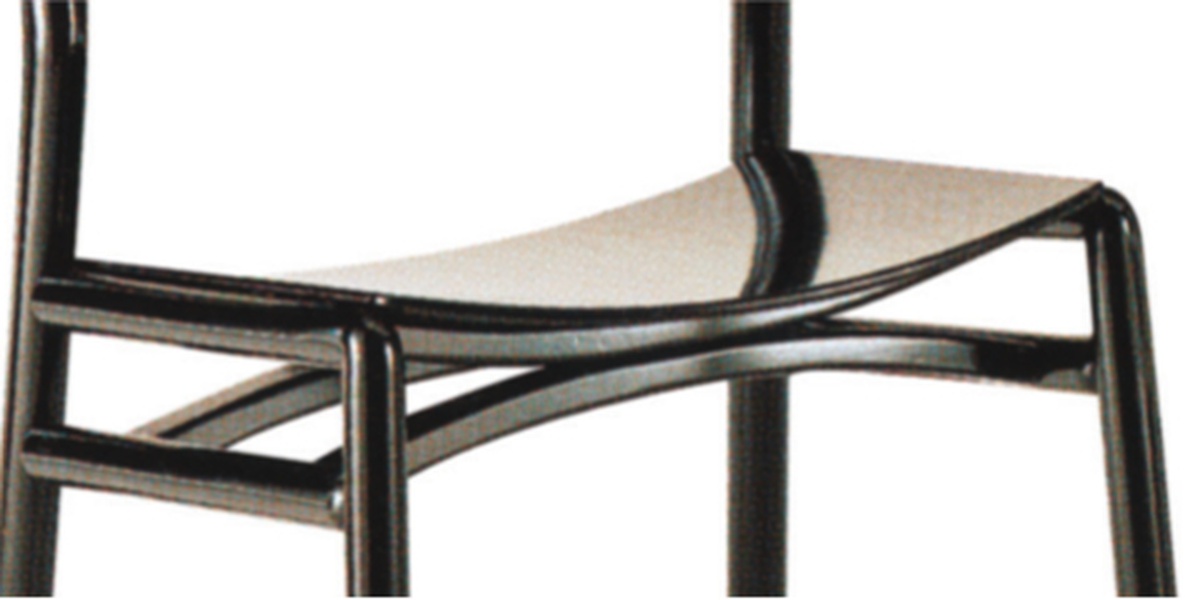Museo del Design del Friuli Venezia Giulia – Associazione di Promozione Sociale
P. IVA e CF 02863400301 – info@mudefri.it
In designing a contract chair Pasquinelli has proven to feel an urgency which transcends the company’s requests or mere ergonomics. He faces specific themes and chair types on the basis of profound convictions – consequent "challenges" – rather than on market reasons.
1988
Balestra
Manufactured by Calligaris
Beechwood chair, with solid wood legs and glulam shells.

Balestra is characterized by the refined composition that gives shape to the seat. Two arcs act as support for the opposite curve of the seat above, drawing the "front" with elegance.
The chair displays almost a "Palladian" façade, manifesting Pasquinelli’s instinct for order and simplicity. Inspired by the static principle of the parabolic springs used in the suspension systems of heavy vehicles, the structural coupling of the double wooden arc avoids the use of supports under the seat. The degree of control of the project is total as there is no perspective aesthetically not perfectly controlled by the designer.
For Pasquinelli it is an unusual practice to underline by a beam the side view of a chair: in fact the absence of visible connections between the legs is his style. But in Balestra they are necessary because they allows the double arc to relieve the weight. Obliged to reintroduce the unloved constructive elements in order to give the required strengths for a contract sitting, Pasquinelli manages, thanks to his ability, to lend cleanliness and consistency to the whole. The peculiar double curvature of seat and back gives the product a special feeling of softness and sensuality.
In this project, the designer takes up the constructive approach experimented in 1976 with Ada, a chair manufactured by Pallavisini and distributed by Snaidero along with the Abaco kitchen by Angelo Mangiarotti.

